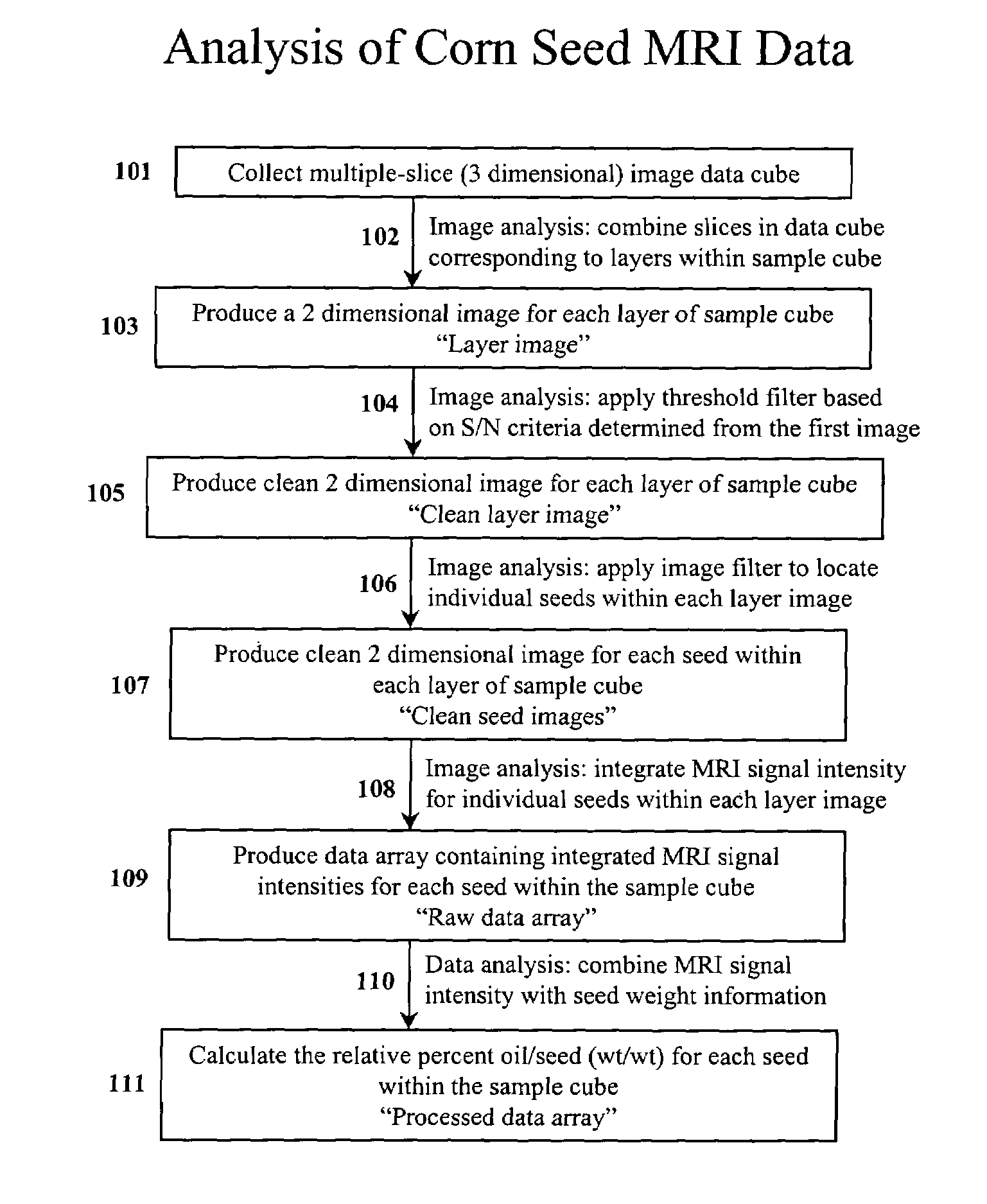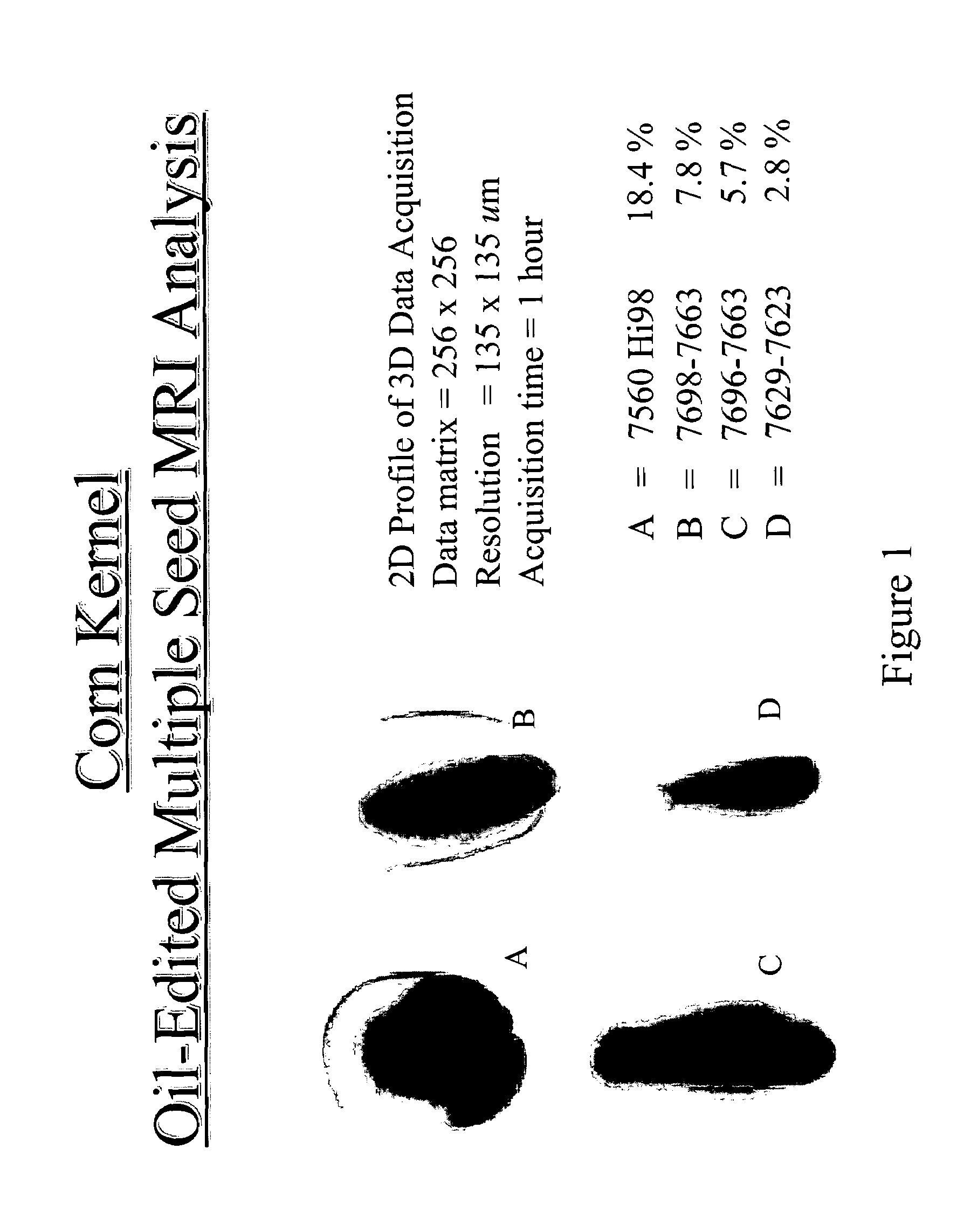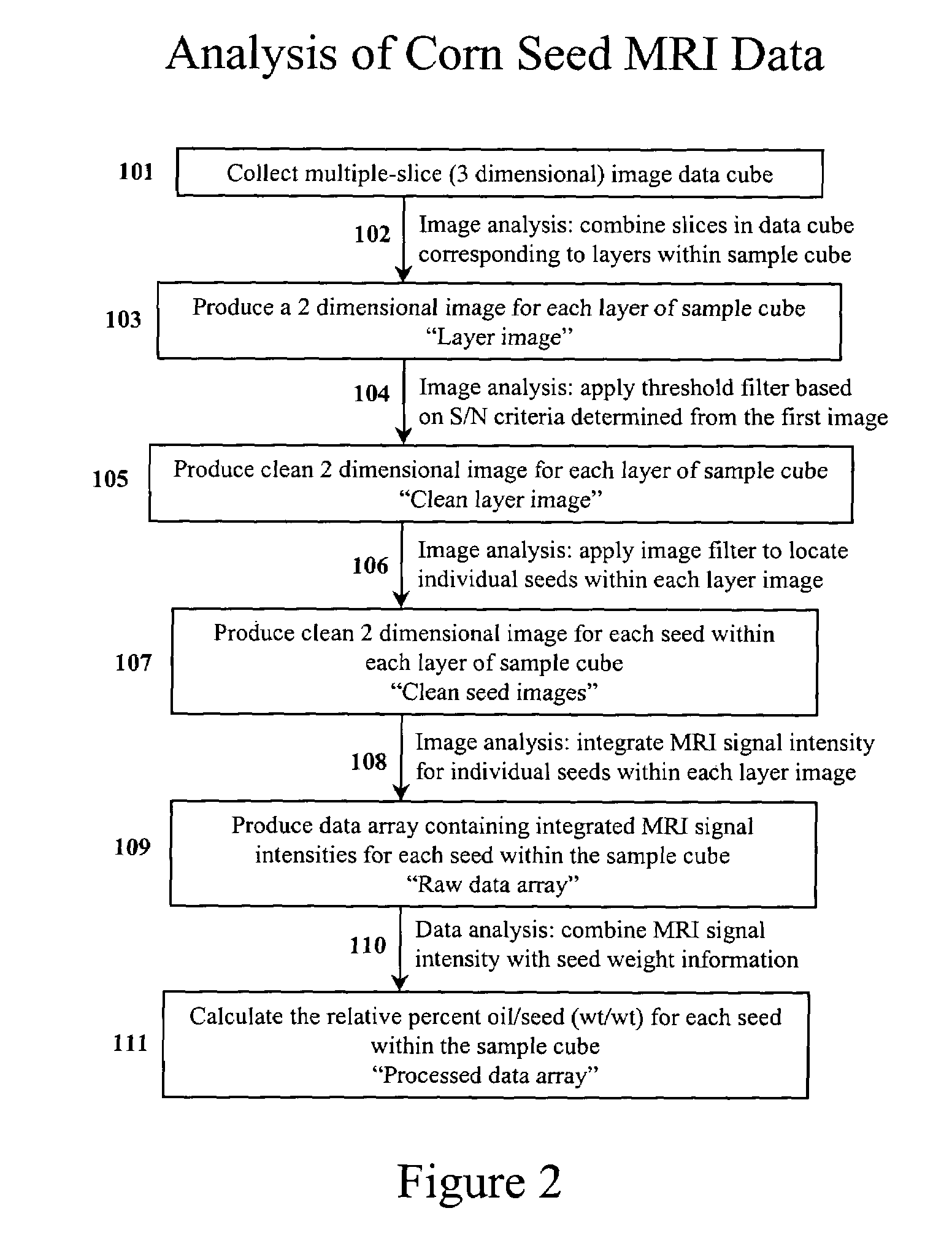Apparatus and methods for analyzing and improving agricultural products
a technology for agricultural products and apparatus, applied in the field of agricultural products analysis devices and methods, can solve the problems of poor signal-to-noise, inability to distinguish characteristics of individual seeds, and offer a poor approach for single-seed analysis, and achieve the effect of rapid and non-destructive analysis
- Summary
- Abstract
- Description
- Claims
- Application Information
AI Technical Summary
Benefits of technology
Problems solved by technology
Method used
Image
Examples
example 1
[0111]Images of corn kernels are obtained using a 1.5 tesla Magnetom™ Vision MR scanner (Siemens, Erlangen) using the standard whole-body resonator. The gradient strength is set to 25 mT / m on all axes. With the gradient booster, the full strength ramp time was 312 μs. The full gradient capabilities of the gradient set are not used in the seed imaging sequence. A spin-echo sequence is used (tr / te=1920 / 17 ms) with an excitation flip angle of 90° and refocussing flip angle of 180°. The receiver bandwidth is 130 Hz / pixel. The field-of-view is set to 450×450 mm. The data matrix obtained is 256×256. The images obtained from each sample cube consist of 50 contiguous coronal slices, acquired using the interleaved option, positioned so that there is at least one non-sample-bearing slice between each layer of samples in the cube. For the corn oil calibration standards, two scans are obtained, with the receiver gain set to 97.98 dB, and FFT scale factor set to 0.1. For the corn-seed samples, f...
example 2
[0118]48-well sample trays are loaded with oil seeds including corn, soybean, and canola. Two stacks of 5 plates containing individual seeds are placed in plexiglass sample holders to make an array comprising a total of 480 seeds. An array of seeds is inserted into a commercially available MRI detection coil that is large enough to accommodate the sample holder. An MRI coil containing the seeds is inserted into the MRI magnet for data collection using standard, non-proprietary data acquisition techniques. MRI data is sent to a computer, where it is processed using a custom macro in Varian ImageBrowser™ (Varian, Inc., Palo Alto, Calif.) software to obtain MRI signal intensities for each of the individual corn kernels in the sample. The resulting data is used to calculate the percentage of oil by weight in each of the 480 seeds within the sample.
example 3
[0119]A 1.5 tesla clinical grade MRI scanner is used to analyze a sample of 3456 seeds organized in 12 layers of 12 24-well trays. The experiment is conducted according to the protocol set forth in Example 2, above.
PUM
 Login to View More
Login to View More Abstract
Description
Claims
Application Information
 Login to View More
Login to View More - R&D
- Intellectual Property
- Life Sciences
- Materials
- Tech Scout
- Unparalleled Data Quality
- Higher Quality Content
- 60% Fewer Hallucinations
Browse by: Latest US Patents, China's latest patents, Technical Efficacy Thesaurus, Application Domain, Technology Topic, Popular Technical Reports.
© 2025 PatSnap. All rights reserved.Legal|Privacy policy|Modern Slavery Act Transparency Statement|Sitemap|About US| Contact US: help@patsnap.com



